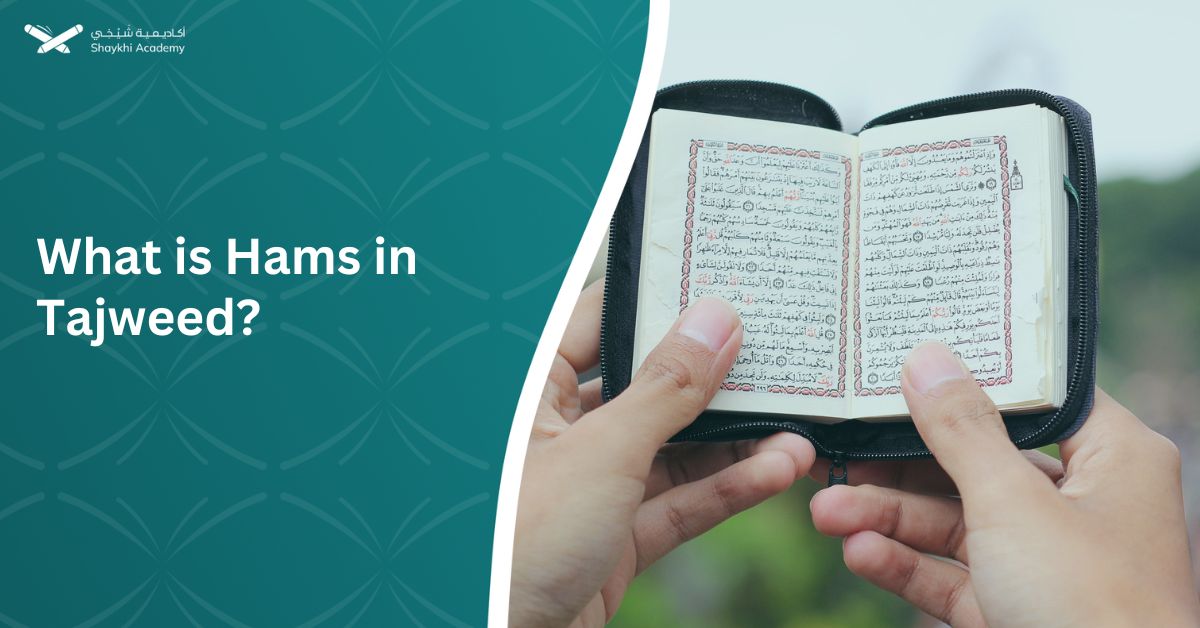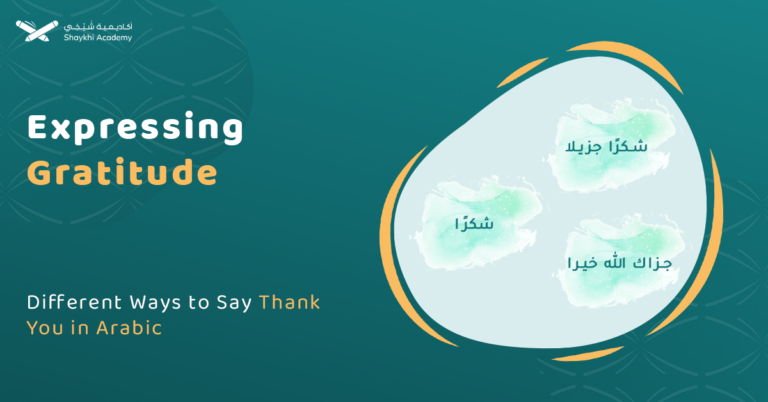Tajweed is the discipline that encapsulates the rules governing the pronunciation of the Quranic text during recitation. Among these rules is the concept of “Hams,” which falls under the category of letter articulation and characteristics in Arabic language.
Hams refers to a specific attribute: linguistically, it means “concealment” and technically, it refers to the softening of a letter due to its weakness, accompanied by a flow of breath when pronounced, owing to the letter’s inherent weakness in articulation. These ten letters are collectively known as “Mahmousa” due to their weakness and the flow of breath associated with their pronunciation.
Definition of Hams (الهمس)
Hams (الهمس), derived from the Arabic word meaning “whisper,” refers to the characteristic of certain Arabic letters pronounced with a noticeable flow of breath. This subtle, breathy sound is produced when articulating certain Arabic letters in Quranic recitation. The quality of Hams is more pronounced when the letter is emphatic (مشدد) or movable (متحرك), and it becomes clearer when the letter is in a stationary state (ساكن).
These letters, known as “Hams letters” (ف (Fa), ح (Ha), ث (Tha), ه (Ha), ش (Sheen), خ (Kha), ص (Saad), س (Seen), ك (Kaaf), ت (Ta)), require careful pronunciation to ensure the breath flows smoothly, contrasting with “Jahr,” where the breath is held back. Proper application of Hams is crucial for clear and beautiful Quranic recitation.
Application of Hams
Hams impact pronunciation by softening the articulation of letters, creating a whisper-like sound. Here are some key considerations for applying Hams:
- Avoid Complete Closure: Ensure the articulation point is not fully closed to allow breath to pass.
- Moderate Pressure: Apply gentle pressure to enable the flow of breath, producing the characteristic Hams sound.
Opposite of Hams: Al-Jahr
In Tajweed, Al-Jahr contrasts with Hams by involving the retention of breath, resulting in a more forceful articulation. This balance between breathiness and boldness is essential for precise Quranic recitation.
Hams vs. Jahr (الهمس & الجهر)
Hams is juxtaposed with Jahr, where the breath is held back, resulting in a stronger, fuller sound. Understanding this contrast is essential for mastering Quranic recitation.
Characteristics of Hams
In Tajweed, Hams is associated with specific characteristics:
- Linguistic Definition: Whisper, the concealment of breath.
- Applied Definition: Running of breath due to weakness in the letter’s origin.
- Pronunciation: Weakens strict reliance on the articulation point.
Letters of Hams
The following Arabic letters exhibit the characteristic of Hams, pronounced with a whisper-like, breathy quality:
| Letter | Translation | Example Ayah | Surah |
|---|---|---|---|
| ث (tha) | thumma antum tashkurūn | “ثُمَّ أَنْتُمْ تَشْكُرُونَ” | An-Naml 27:40 |
| ه (ha) | wahuwa ʿalā kulli shay’in qadīr | “وَهُوَ عَلَى كُلِّ شَيْءٍ قَدِيرٌ” | Al-Mulk 67:1 |
| ش (sheen) | shāhidun wamashhūd | “شَاهِدٌ وَمَشْهُودٍ” | Al-Buruj 85:3 |
| خ (kha) | khalaqa l-insāna min ʿalaq | “خَلَقَ الإِنسَانَ مِنْ عَلَقٍ” | Al-Alaq 96:2 |
| ص (saad) | ṣirāṭa l-ladhīna anʿamta ʿalayhim | “صِرَاطَ الَّذِينَ أَنْعَمْتَ عَلَيْهِمْ” | Al-Fatihah 1:7 |
| س (seen) | subḥāna l-ladhī asrā | “سُبْحَانَ الَّذِي أَسْرَى” | Al-Isra 17:1 |
| ك (kaaf) | kamā ṣabara ulū l-ʿazm | “كَمَا صَبَّرَ أُوْلُوا الْعَزْمِ” | Al-Ahqaf 46:35 |
| ت (taa) | tabbat yadā abī lahabin watabb | “تَبَّتْ يَدَا أَبِي لَهَبٍ وَتَبَّ” | Al-Masad 111:1 |
These letters, when pronounced with Hams, contribute to the soft, whispery texture of Quranic recitation.
Practical Application of Hams in Tajweed
To incorporate Hams into Tajweed practice:
- Articulation Point: Ensure the articulation point of the letter is not completely sealed to allow for the whispery sound.
- Pressure on Articulation Point: Apply a light touch to enable breath flow, essential for producing the Hams quality.
Demonstration and Training Table
| Letter | Arabic Verse | Example Ayah | Surah | Pronunciation Guidelines |
| ف (fa) | يَفْقَهُوا قَوْلِي | Taha28 | سورة طه | Pronounce “ف” as “fa” with a slight whisper from the letter’s exit. |
| ح (haa) | وَأَنَّهُ هُوَ أَمَاتَ وَأَحْيَا | Yunus 10:12 | سورة يونس | Pronounce “ح” as “haa” with a slight whisper from the letter’s exit. |
| ث (tha) | لا تَثْرِيبَ عَلَيْكُمُ الْيَوْمَ | Yusuf92 | سورة يوسف | Pronounce “ث” as “tha” with a slight whisper from the letter’s exit. |
| ه(haa) | يَا لَيْتَنِي لَمْ أُوتَ كِتَابِيَهْ | Al-Inshiqaq25 | سورة الإنشقاق | Pronounce “ه” as “haa” with a slight whisper from the letter’s exit. |
| ش (sheenl) | وَأَشْرِكْهُ فِي أَمْرِي | Taha32 | سورة طه | Pronounce “ش” as “sheenl” with a slight whisper from the letter’s exit. |
| خ (kha) | رَبَّنَآ أَخْرِجْنَا مِنْهَا فَإِنْ عُدْنَا فَإِنَّا ظَٰلِمُونَ | Al-muminoon107 | سورة المؤمنون | Pronounce “خ” as “kha” with a slight whisper from the letter’s exit. |
| ص (sad) | فَأَصْبَحَ فِى ٱلْمَدِينَةِ خَآئِفًا يَتَرَقَّبُ | Al-kasas18 | سورة القصص | Pronounce “ص” as “sad” with a slight whisper from the letter’s exit. |
| س (seen) | وَاسْتَكْبَرُوا اسْتِكْبَارًا | Noah7 | سورة نوح | Pronounce “س” as “seen” with a slight whisper from the letter’s exit. |
| ك (kaf) | قُلْ مَنْ يَكْلَؤُكُمْ | Al-Anbea42 | سورة الأنبياء | Pronounce “ك” as “kaf” with a slight whisper from the letter’s exit. |
| ت (taa) | فَمَا أَغْنَتْ عَنْهُمْ آلِهَتُهُمُ | Houd101 | سورة هود | Pronounce “ت” as “taa” with a slight whisper from the letter’s exit. |
Take Your Recitation to the Next Level with ShayKhi Academy
ShayKhi Academy offers an unparalleled learning experience for those seeking to master the art of Quranic recitation. Our expert instructors use innovative teaching methods to make the complex rules of Tajweed accessible and engaging.
By joining our academy, you’ll gain a deeper understanding of the nuances of Arabic phonetics and improve your recitation with precision. Our courses are designed for all levels, from beginners to advanced students, ensuring personalized attention and growth. Elevate your recitation and connect more profoundly with the Quran through ShayKhiAcademy’s comprehensive and interactive Tajweed programs.
At ShayKhi Academy, we are dedicated to helping you enhance your Quranic recitation through our specialized and interactive Tajweed courses. Our experienced instructors provide in-depth guidance on the rules of Tajweed, ensuring you develop the skills needed for precise and beautiful recitation.
Whether you’re a beginner or looking to refine your technique, our programs are tailored to meet your needs and elevate your recitation to the next level. Join ShayKhi Academy today and embark on a transformative journey that deepens your connection with the Quran. ShayKhi Academy – mastering the art of recitation, one letter at a time.
Why Choose Shaykhi Academy?
- Connect with highly qualified native tutors.
- Flexible scheduling to suit your busy lifestyle.
- Affordable classes tailored for all levels.
- Accessible from anywhere around the globe.
Discover Our Range of Courses:
- Arabic Noorani Qaida: Lay a solid foundation for Quranic studies.
- Online Quran Classes for Kids: Engaging lessons for lifelong learning.
- Tajweed Rules for Kids: Learn to recite with confidence.
- Quran Hifz for Kids: Step-by-step guidance to memorize the Quran.
- Quran for Adults: Introduce yourself to Quran reading and Tajweed rules.
- Online Arabic Courses: Master the language of the Quran.
- Islamic Studies: A wide range of topics related to Islam, including theology, law, Quranic studies, and Hadith.
Don’t Miss Out on Your Chance to Excel! Whether you’re a beginner or seeking advanced knowledge, Shaykhi Academy can guide you! Book your free trial now

Conclusion
Understanding and applying the rules of Hams in Tajweed is fundamental for anyone seeking to master the art of Quranic recitation. By focusing on the proper articulation of Hams letters, reciters can enhance their pronunciation and ensure their recitation is both accurate and beautiful.
For those looking to deepen their knowledge of Tajweed, enrolling in specialized courses at reputable institutions, such as Sheikhi Academy, can provide the necessary guidance and expertise.


















































